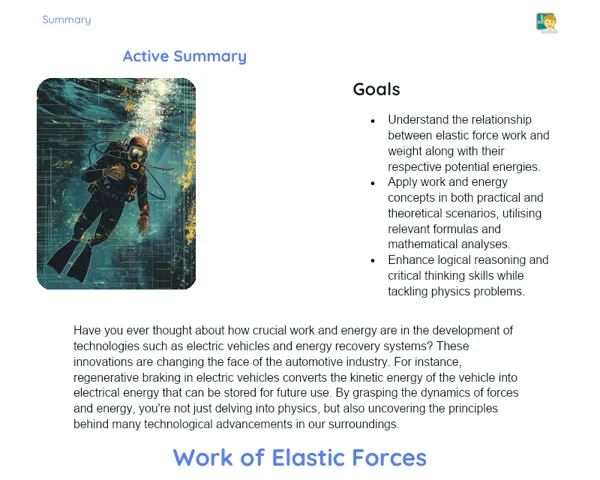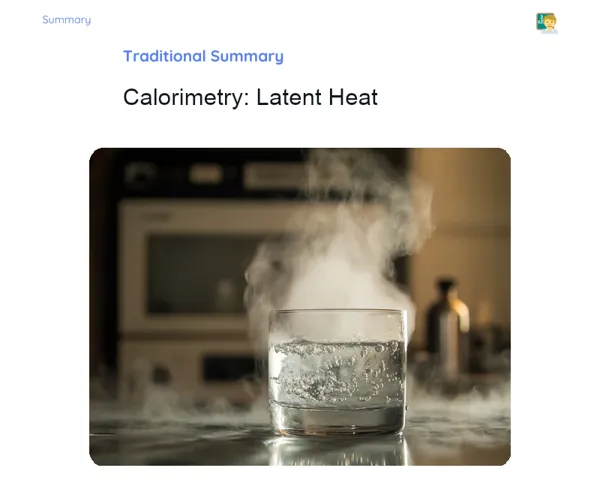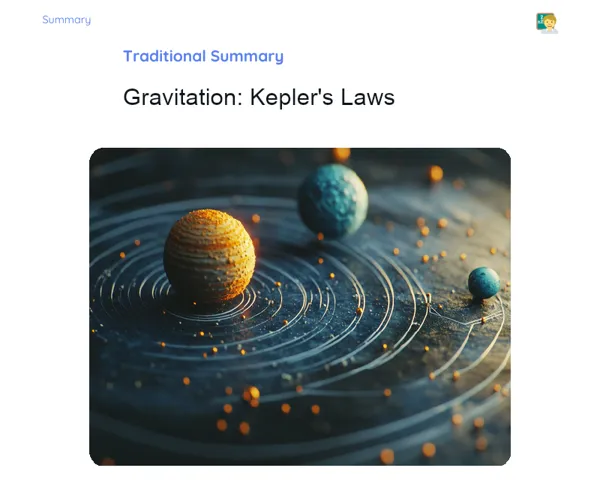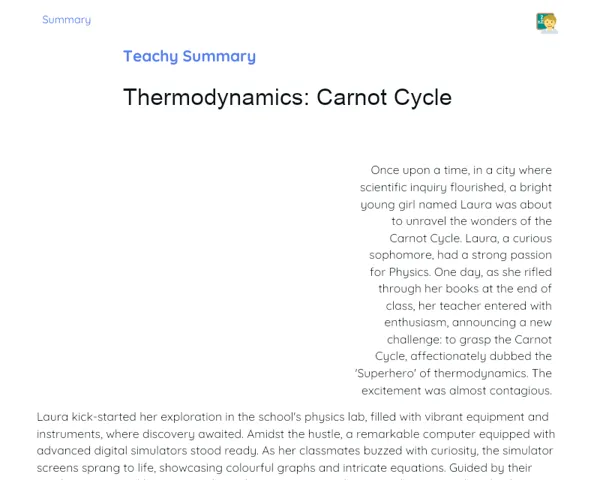Summary Tradisional | Electricity: Parallel Plate Capacitor
Contextualization
Electricity plays a pivotal role in our daily lives, powering everything from our lights to our smartphones. One of the key components that facilitate the storage and controlled release of electrical energy is capacitors. Among the various types of capacitors, the parallel plate capacitor is particularly noteworthy.
Consisting of two parallel metal plates separated by an insulating material known as a dielectric, parallel plate capacitors are fundamental in energy storage. To calculate capacitance effectively, we need to consider the area of the plates, the separation distance, and the type of dielectric used. Understanding these concepts is essential for designing and optimizing the electronic gadgets we use, such as laptops, mobile phones, and audio systems.
To Remember!
Capacitance
Capacitance refers to a capacitor's ability to hold electric charge, measured in Farads (F). Since a Farad is a large unit, we often use smaller denominations like microfarads (μF), nanofarads (nF), and picofarads (pF). The capacitance value depends on physical characteristics such as plate area, the distance between the plates, and the dielectric material.
The formula for calculating the capacitance of a parallel plate capacitor is: C = (ε * A) / d, where C is the capacitance, ε is the permittivity of the dielectric material, A is the plate area, and d is the distance between the plates. This indicates that capacitance increases with a larger plate area and decreases with a greater distance. Additionally, the type of dielectric material significantly influences capacitance.
Grasping the concept of capacitance is vital for effective capacitor design and utilization in electronic circuits. For instance, in applications requiring large energy storage, like camera flashes, high-capacitance capacitors are essential.
-
Capacitance indicates how much charge a capacitor can store.
-
Measured in Farads (F) and its smaller subdivisions (μF, nF, pF).
-
It depends on the plate area, plate separation, and the dielectric material.
Structure of a Parallel Plate Capacitor
A parallel plate capacitor is made up of two parallel conductive plates separated by a dielectric insulator. The plates are usually crafted from conductive materials such as aluminum or copper, while the dielectric can range from air, paper, glass, ceramic, to various polymers.
When an electric voltage is applied to the plates, one becomes positively charged while the other accumulates a negative charge. The dielectric prevents direct current from flowing between the plates but allows for the generation of an electric field, which stores the electric energy.
The straightforward design of parallel plate capacitors makes them suitable for numerous electronic applications, from simple charge storage to complex signal filtering systems.
-
Composed of two parallel plates alongside a dielectric material.
-
Plates are typically made of conductive materials like aluminum or copper.
-
The dielectric material prevents direct current flow, enabling an electric field to form.
Capacitance Formula
The capacitance of a parallel plate capacitor can be calculated using the formula C = (ε * A) / d. Each component in the formula holds significant weight in determining capacitance. Permittivity (ε) gauges the efficiency of the dielectric material in concentrating electric field lines, while the area of the plates (A) is directly proportional to the charge storage capacity. Meanwhile, the distance between the plates (d) is inversely proportional to capacitance; a smaller gap results in higher capacitance.
For accurate application of this formula, it's vital to utilize the correct measurement units. Permittivity is typically expressed in Farads per meter (F/m), area in square meters (m²), and distance in meters (m). Any inconsistencies in units could lead to substantial calculation errors, so always verify and convert as needed for precise results.
Moreover, the formula underscores the dielectric's importance. Different materials exhibit varying permittivity, thereby affecting capacitance. Materials such as ceramics and polymers typically possess higher permittivity than air, which facilitates the creation of capacitors with higher capacitance in more compact forms.
-
Formula: C = (ε * A) / d.
-
Permittivity (ε) is indicated in Farads per meter (F/m).
-
Capacitance varies inversely with the plate separation (d).
Practical Applications
Parallel plate capacitors are extensively used in various electronic applications due to their rapid energy storage and release capabilities. A prime example is their role in power supplies, where they stabilize output voltage and enhance reliability.
In signal filtering, capacitors can block low-frequency signals while permitting higher-frequency signals to pass through, making them integral in communication and processing systems. Furthermore, timers and oscillation circuits utilize capacitors by controlling their charge and discharge cycles to produce periodic signals.
In devices like cameras, capacitors provide critical support for flash operations. They store energy and discharge it quickly to create a burst of light essential for capturing images in dim lighting. The ability to deliver significant energy swiftly makes parallel plate capacitors vital in a variety of technological applications today.
-
Used in power supplies for smoother output voltage.
-
Key components in signal filtering circuits.
-
Essential for flash operations in cameras.
Key Terms
-
Capacitance: The capacity of a capacitor to hold electric charge, quantified in Farads (F).
-
Permittivity: A metric for the ability of a dielectric material to concentrate electric field lines.
-
Dielectric: An insulator used between the plates of a capacitor to block direct current.
-
Farad: The measurement unit for capacitance.
-
Parallel Plate Capacitor: A type of capacitor with two parallel plates separated by a dielectric.
Important Conclusions
The discussion on parallel plate capacitors highlighted core concepts like capacitance definition, the capacitor's structure, and the mathematical relationship connecting capacitance with the area of the plates, distance between them, and the dielectric's permittivity. Understanding these principles is critical for accurately computing capacitance in diverse scenarios and practical applications.
Real-world examples, such as their use in power supply stability, signal filtering, and camera flashes, illustrate the importance of parallel plate capacitors, which are crucial in numerous modern electronics due to their swift energy storage and release properties.
We stress that the insights gained from this lesson are vital for the design and enhancement of electronic circuits. Students are encouraged to further explore this area, as understanding capacitance and parallel plate capacitors is essential in various technological advancements and innovations for the future.
Study Tips
-
Review the practical cases discussed in class and tackle similar problems to reinforce your grasp of capacitance calculations.
-
Explore different dielectric materials and their permittivities to comprehend their effect on capacitance.
-
Investigate real-world uses of parallel plate capacitors in devices like power supplies, signal filters, and camera flashes to see practical applications of the concepts.



